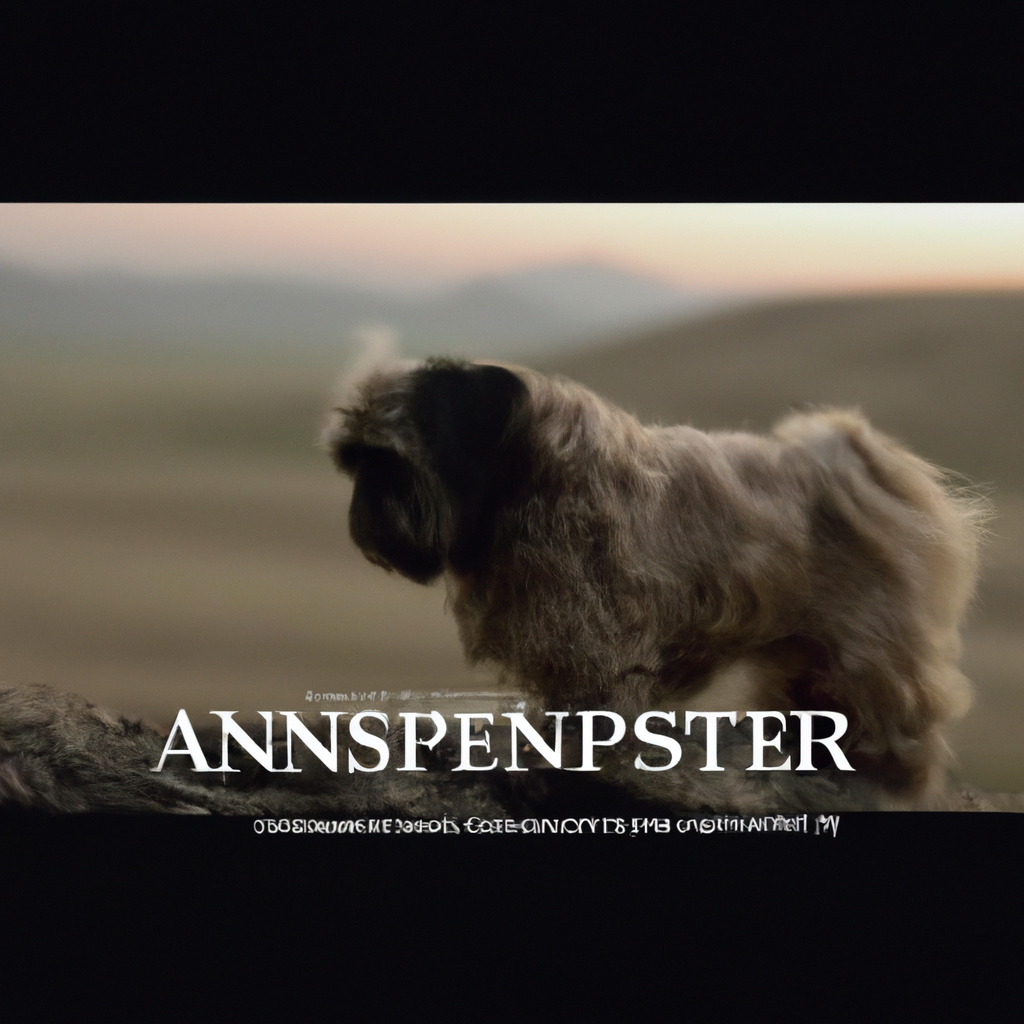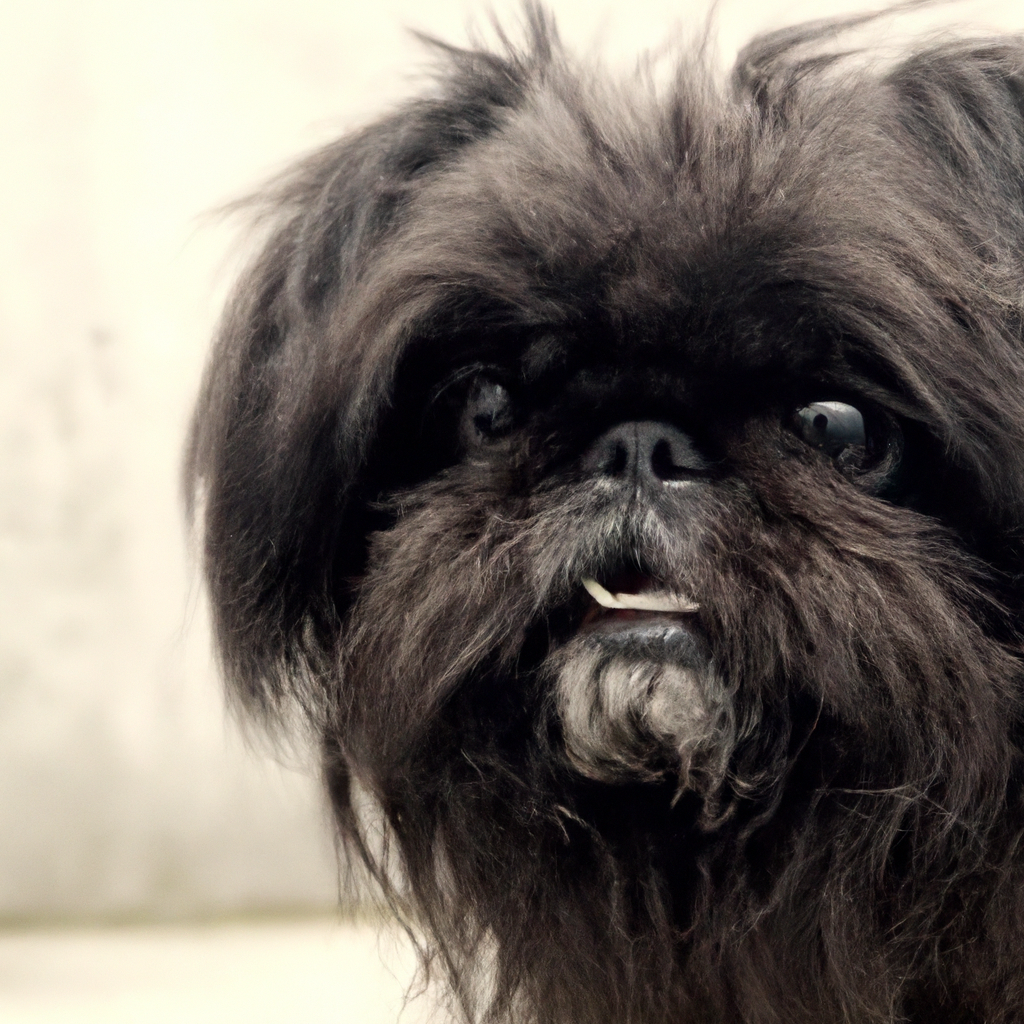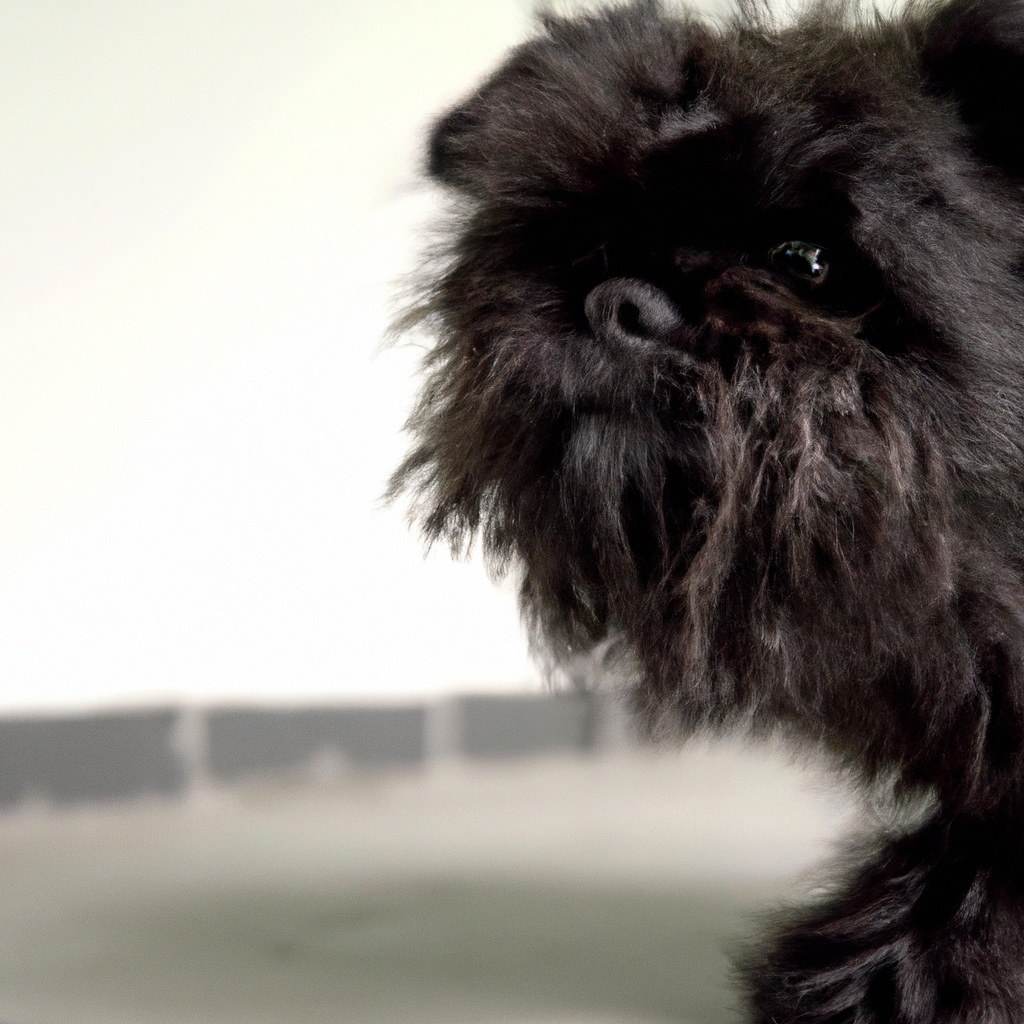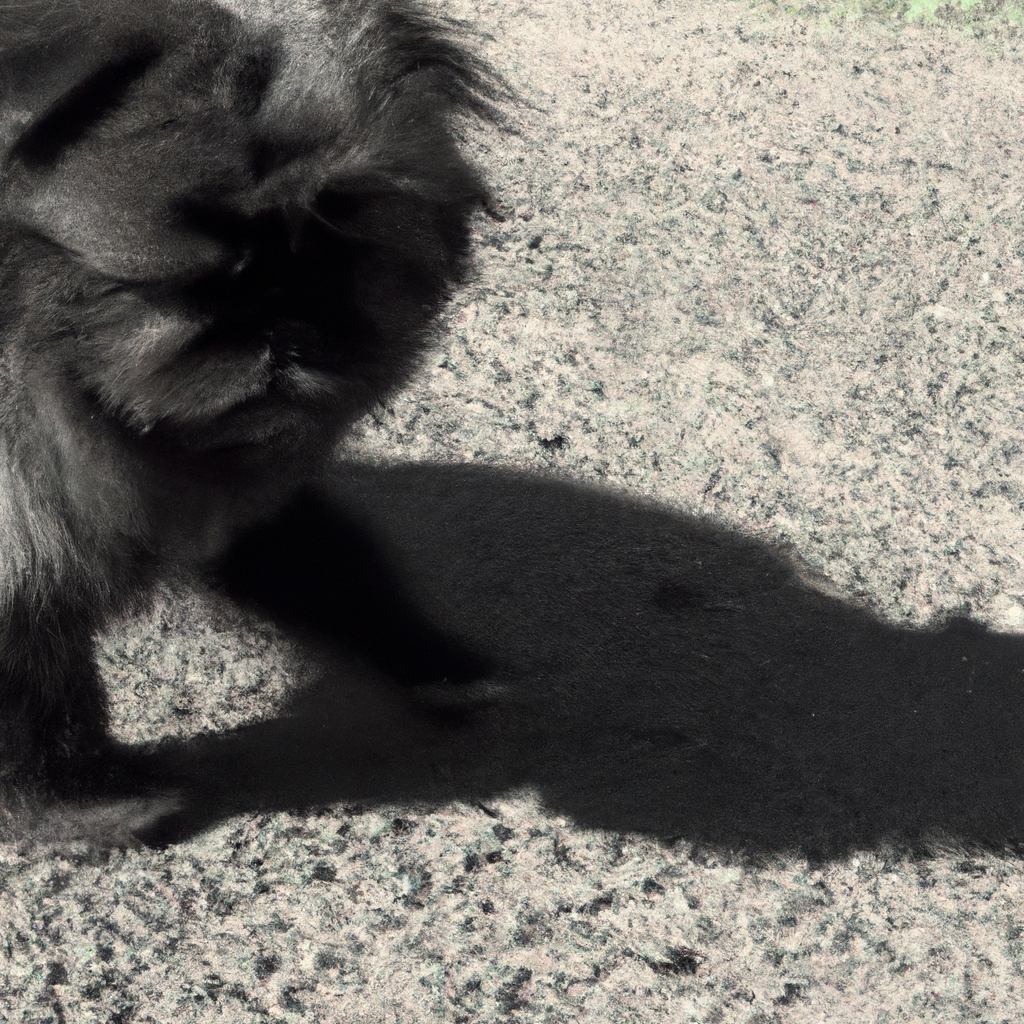Understanding the origin of Affenpinschers involves delving into the history of this unique breed of toy dog, which is known for its distinctive appearance and playful, energetic nature. Originating in Germany in the 17th century, Affenpinschers were initially bred to serve as ratters in homes and stables. Over time, they were miniaturized to become companion dogs. The term ‘Affenpinscher’ translates to ‘monkey terrier’ in German, a nod to their primate-like faces and mischievous demeanor. This breed’s rich history and evolution over centuries make it a fascinating subject of study for dog enthusiasts and historians alike.
Tracing the History of Affenpinschers: A Comprehensive Guide
Affenpinschers, often referred to as “Monkey Terriers” or “Monkey Dogs” due to their distinct primate-like appearance, are a unique breed of toy dogs that have captured the hearts of many dog lovers worldwide. But have you ever wondered about the origin of these adorable, mischievous little creatures? Let’s embark on a journey tracing the history of Affenpinschers, a comprehensive guide to understanding their roots.
The Affenpinscher’s history is somewhat shrouded in mystery, primarily because their existence predates detailed breed records. However, it’s widely accepted that they originated in Germany around the 17th century. The name “Affenpinscher” itself is German, translating to “Monkey Terrier” in English, a testament to their monkey-like faces and terrier-like tenacity.
Initially, Affenpinschers were larger than the ones we see today, about 12 to 13 inches tall. They were primarily used as ratters, their job being to control the rodent population in stables, homes, and shops. Their small size and agile nature made them perfect for this role, as they could easily chase rats and mice into narrow spaces.
As time passed, Affenpinschers began to find their way into households, not just as ratters, but as companions. Their endearing looks and playful, yet protective nature made them popular among families. This shift in their role led to a change in their size. Breeders started to selectively breed smaller Affenpinschers, making them more suitable as lap dogs. By the late 19th century, the Affenpinscher had evolved into the small, lovable breed we know today.
The Affenpinscher’s journey wasn’t just confined to Germany. In the late 19th and early 20th centuries, they began to spread across Europe, gaining popularity in countries like France and Belgium. They were often crossbred with other small breeds such as the Pug and the German Pinscher, leading to the development of other beloved breeds like the Miniature Schnauzer and the Brussels Griffon.
The Affenpinscher’s arrival in America is believed to have occurred in the early 20th century. However, it wasn’t until the 1930s that the breed gained recognition from the American Kennel Club (AKC). The onset of World War II saw a decline in their popularity, as breeding non-military dogs was discouraged. But post-war, the breed experienced a resurgence and has since continued to be a beloved pet in many American households.
Today, the Affenpinscher is cherished for its unique appearance and spirited personality. They are known for their loyalty, intelligence, and boldness. Despite their small size, they are fearless and often unaware of their diminutive stature when confronting larger dogs or defending their territory. Their playful and affectionate nature makes them excellent companions, while their alertness and loyalty make them effective watchdogs.
In conclusion, the Affenpinscher’s journey from a rat-chasing working dog in Germany to a beloved companion worldwide is a fascinating tale. It’s a testament to their adaptability, charm, and enduring appeal. So, the next time you look into the expressive eyes of an Affenpinscher, remember the rich history behind this captivating breed.
The Affenpinscher: Unraveling the Origins of this Unique Breed
The Affenpinscher, often referred to as the “Monkey Terrier” due to its distinctive, primate-like facial features, is a small but feisty breed that has captured the hearts of dog lovers worldwide. But have you ever wondered about the origins of this unique breed? Let’s delve into the fascinating history of the Affenpinscher, a journey that takes us back several centuries and across multiple European countries.
The Affenpinscher’s story begins in the 17th century in Germany. The breed’s name, in fact, is a German term that translates to “monkey-like terrier.” This is a nod to their distinctive facial features, which bear a striking resemblance to monkeys. The Affenpinscher was initially bred to serve as a ratter, a dog that was tasked with hunting and killing rats, mice, and other pests in homes, farms, and stables. Their small size, agility, and tenacity made them perfect for this role.
As time went on, the Affenpinscher’s role began to evolve. While they were still used as ratters, they also started to be kept as companion dogs. Their small size, coupled with their lively and affectionate nature, made them perfect lap dogs. They were particularly popular among the ladies of the house, who appreciated their companionship and their ability to keep the household free of pests.
By the 18th and 19th centuries, the Affenpinscher had become a popular breed throughout Europe. They were particularly beloved in France, where they were known as “diablotins,” a term that translates to “little devils.” This was a playful nod to their mischievous nature and boundless energy. During this time, breeders began to selectively breed Affenpinschers to emphasize certain traits, such as their distinctive facial features and small size. This led to the Affenpinscher we know and love today.
The Affenpinscher’s journey to America is a bit of a mystery. It’s believed that the first Affenpinschers arrived in the United States in the early 20th century. However, the breed didn’t gain popularity until the mid-20th century. The American Kennel Club officially recognized the Affenpinscher in 1936, but it wasn’t until the 1950s that the breed began to gain a following. Today, the Affenpinscher is a beloved breed in America, known for its distinctive appearance and playful, affectionate nature.
The Affenpinscher’s history is a testament to the breed’s adaptability and charm. From its origins as a ratter in Germany to its status as a beloved companion dog, the Affenpinscher has proven to be a versatile and endearing breed. Its distinctive appearance, coupled with its lively personality, has endeared it to dog lovers around the world.
So, the next time you see an Affenpinscher, take a moment to appreciate its rich history. This small but mighty breed has come a long way from its origins in 17th century Germany. And whether they’re hunting pests or warming laps, Affenpinschers continue to bring joy and companionship to those lucky enough to share their lives with them.
Affenpinschers: A Deep Dive into their Ancestral Roots
Affenpinschers, often referred to as “Monkey Terriers” or “Monkey Dogs” due to their distinct primate-like appearance, are a unique breed of toy dogs that have captured the hearts of many dog lovers worldwide. But have you ever wondered about the origin of these adorable, mustachioed creatures? Let’s take a deep dive into their ancestral roots.
The Affenpinscher’s history is somewhat shrouded in mystery, but it’s generally agreed that they originated in Germany around the 17th century. The name “Affenpinscher” itself translates to “monkey terrier” in German, which is a nod to their monkey-like faces. They were initially bred to be ratters, working dogs that were tasked with eliminating rats and other pests in homes, stables, and shops. Their small size and agile nature made them perfect for this role.
As we move forward in time, Affenpinschers began to be bred smaller to become companion dogs rather than working dogs. This transition was likely influenced by the changing societal norms of the time. As the middle class began to rise, there was an increased demand for small, companion dogs that could live comfortably in urban environments. Affenpinschers, with their small size and charming personalities, fit the bill perfectly.
Despite their growing popularity as companion dogs, Affenpinschers remained relatively unknown outside of Germany until the late 19th century. It was around this time that they began to be exported to other countries. The first Affenpinscher to be registered in the United States was a dog named ‘Banana Joe,’ who also won Best in Show at the Westminster Kennel Club Dog Show in 2013.
Interestingly, the two World Wars had a significant impact on the Affenpinscher breed. During these periods of conflict, breeding programs were largely abandoned, and many dog breeds, including the Affenpinscher, faced the threat of extinction. However, dedicated breeders in the United States and Germany worked tirelessly to revive the breed in the post-war years.
Today, Affenpinschers are cherished for their unique appearance and lively personalities. They are known for their loyalty, intelligence, and playful nature, making them excellent companions. Despite their small size, they are also known for their fearless and protective nature, a trait that harks back to their days as ratters.
While Affenpinschers have come a long way from their origins as working dogs in Germany, they still retain many of the traits that made them so effective in that role. Their agility, intelligence, and tenacity are all characteristics that served them well as ratters and continue to be defining traits of the breed today.
In conclusion, the Affenpinscher is a breed with a rich and fascinating history. From their origins as working dogs in Germany to their current status as beloved companion animals, Affenpinschers have proven to be adaptable and resilient. Their unique appearance and charming personalities have endeared them to dog lovers worldwide, and their story is a testament to the enduring appeal of this remarkable breed. So, the next time you see an Affenpinscher, you’ll know a bit more about the deep ancestral roots behind those expressive, monkey-like faces.
The Evolution of Affenpinschers: From Farm Dogs to Show Dogs
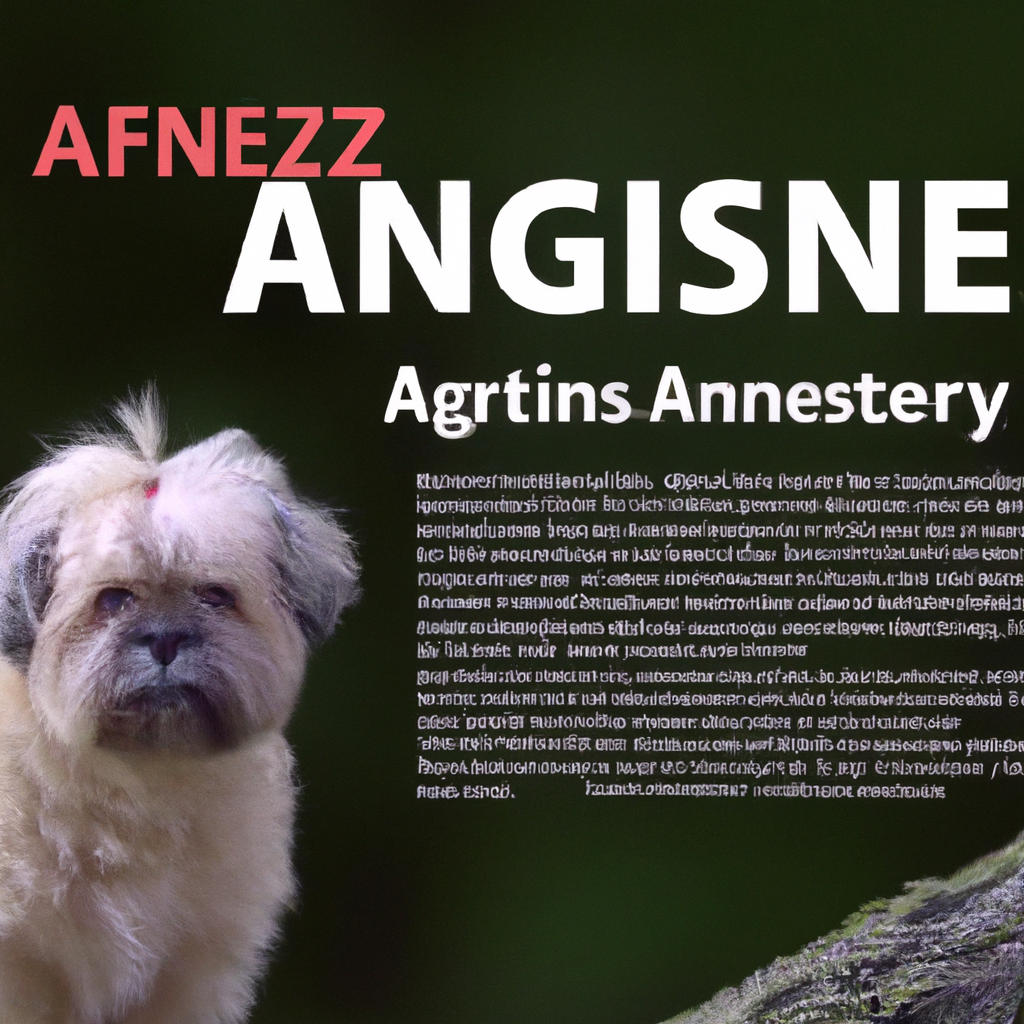
Affenpinschers, often referred to as “Monkey Terriers” or “Monkey Dogs” due to their distinct primate-like appearance, are a unique breed of toy dogs that have captured the hearts of many dog enthusiasts around the world. Their origin and evolution from farm dogs to show dogs is a fascinating tale that reflects the changing roles and perceptions of dogs in human society.
The Affenpinscher breed has a rich history that dates back to the 17th century in Germany. Initially, these dogs were not the petite, adorable pets we know today. They were larger and primarily used as working dogs on farms. Their primary role was to serve as ratters, hunting and killing rats and other pests that threatened the farm’s grain supplies. Their small size, agility, and fearless nature made them excellent at this task.
As time passed, Affenpinschers began to evolve, both in size and purpose. The shift began in the 18th century when they started to be bred smaller to adapt to urban living. People began to appreciate them not just for their utility, but also for their companionship. Their compact size made them ideal for city dwellers, and their spirited and protective nature made them excellent companions.
The 19th century saw another significant shift in the Affenpinscher’s evolution. They transitioned from being working dogs to becoming show dogs. This was a period when dog shows were becoming increasingly popular in Europe, and the Affenpinscher, with its unique looks and charming personality, was a natural fit for this new arena. Breeders began to selectively breed Affenpinschers to emphasize their distinctive features, such as their wiry coat, bushy eyebrows, and monkey-like face.
The Affenpinscher’s journey to the United States is believed to have occurred in the early 20th century. However, it wasn’t until the mid-1930s that the American Kennel Club officially recognized the breed. Since then, the Affenpinscher’s popularity has steadily grown, and they have become a beloved breed in many American households.
Despite their evolution from farm dogs to show dogs, Affenpinschers have retained many of their original traits. They are still fearless, energetic, and fiercely loyal to their owners. Their hunting instincts are also intact, making them excellent watchdogs despite their small size. However, they are also known for their playful and affectionate nature, making them wonderful family pets.
In conclusion, the Affenpinscher’s evolution is a testament to the dynamic relationship between humans and dogs. From their origins as farm dogs in Germany to their current status as beloved pets and show dogs, Affenpinschers have adapted and thrived in changing environments and roles. Their journey reflects not just their resilience and adaptability, but also the evolving human perception of dogs – from utilitarian animals to companions and sources of entertainment. Today, the Affenpinscher stands as a unique breed that embodies both its rich history and its modern role as a cherished pet.
Understanding the Affenpinscher: A Journey Back in Time
The Affenpinscher, affectionately known as the “Monkey Dog,” is a small but feisty breed that has captured the hearts of dog lovers worldwide. But have you ever wondered about the origins of this unique breed? Let’s embark on a journey back in time to understand the Affenpinscher’s roots.
The Affenpinscher’s story begins in 17th century Germany. The breed’s name, which translates to “monkey terrier” in German, is a nod to its distinctive, primate-like facial features. These dogs were initially bred to be ratters, working in stables, shops, and homes to control rodent populations. Their small size allowed them to chase and corner rats and mice in tight spaces, while their fearless nature made them excellent at their job.
As time went on, Affenpinschers began to find their way into the homes of families, not just as ratters, but as beloved pets. Their compact size, coupled with their lively and affectionate nature, made them perfect companions. They were especially popular among ladies of the court, who often kept them as lap dogs. It was during this time that breeders began to selectively breed Affenpinschers to be smaller, transitioning them from working dogs to companion animals.
In the late 19th century, the Affenpinscher’s popularity began to spread beyond Germany’s borders. The breed made its way to America, where it was officially recognized by the American Kennel Club (AKC) in 1936. However, World War II put a temporary halt to the breed’s growth in the United States. It wasn’t until the 1950s that the Affenpinscher began to regain its popularity, a trend that continues to this day.
Despite their long history, Affenpinschers remain relatively rare compared to other breeds. This rarity, however, only adds to their appeal. Today, these “monkey dogs” are cherished for their unique appearance and spirited personalities. They are known for their loyalty and protective nature, making them excellent watchdogs despite their small size. Moreover, their intelligence and eagerness to please make them highly trainable.
While Affenpinschers are generally healthy dogs, they are prone to certain health conditions like hip dysplasia and heart problems. Therefore, potential owners should ensure they source their Affenpinscher from a reputable breeder who prioritizes health and temperament over appearance.
In conclusion, the Affenpinscher’s journey from a rat-catching working dog to a cherished companion animal is a testament to the breed’s adaptability and charm. These small but mighty dogs, with their distinctive “monkey-like” faces and spirited personalities, have left an indelible mark on the hearts of those lucky enough to share their lives with them. Whether they’re keeping your home free of rodents or simply keeping your lap warm, Affenpinschers are a breed that truly stands out from the pack. So, the next time you see an Affenpinscher, you’ll know the rich history behind those expressive eyes and that playful spirit.
The Affenpinscher’s Journey: From Ratters to Companions
The Affenpinscher, a small but mighty breed, has a rich and fascinating history that dates back several centuries. Known for their distinctive, monkey-like faces, these dogs have journeyed from being ratters in German stables to beloved companions in homes worldwide.
The Affenpinscher’s story begins in the 17th century in Germany. The breed’s name, which translates to “monkey terrier” in German, is a nod to their unique, simian-like facial features. Initially, these dogs were bred to be working dogs, specifically ratters. Their small size, agility, and tenacity made them excellent at hunting and killing rats and mice in stables, homes, and shops.
As time passed, the Affenpinscher’s role began to evolve. While they were still valued for their ratting abilities, people started to appreciate them for their other qualities as well. Their lively personalities, loyalty, and intelligence made them endearing companions. Moreover, their small size made them ideal for city living, and they began to find their way into the homes and hearts of urban dwellers.
In the 18th and 19th centuries, breeders began to selectively breed Affenpinschers to be smaller and more companionable. This led to the Affenpinscher we know today: a small, friendly, and intelligent dog with a big personality. Despite their evolution into companion animals, Affenpinschers have retained their working dog roots. They are still known for their fearlessness, tenacity, and strong prey drive.
The Affenpinscher’s journey from ratter to companion wasn’t always smooth. The breed faced near extinction during World War II when breeding programs across Europe were halted. However, thanks to the efforts of dedicated breeders, the Affenpinscher was saved from disappearing entirely. Post-war, the breed was slowly but surely rebuilt, and today, the Affenpinscher is a recognized and cherished breed worldwide.
The Affenpinscher made its way to America in the early 20th century and was recognized by the American Kennel Club (AKC) in 1936. Despite its recognition, the breed remained relatively unknown in the United States until 2002 when an Affenpinscher named Banana Joe won Best in Show at the Westminster Kennel Club Dog Show. This victory put the Affenpinscher in the spotlight and sparked interest in the breed across the country.
Today, the Affenpinscher is cherished for its unique appearance, lively personality, and unwavering loyalty. While they may no longer be hunting rats in German stables, their working dog roots are still evident in their fearless and tenacious nature. They are small dogs with big personalities, and their journey from ratters to companions is a testament to their adaptability and charm.
In conclusion, understanding the origin of Affenpinschers gives us a deeper appreciation for this unique and endearing breed. From their beginnings as ratters in Germany to their current status as beloved companions, Affenpinschers have proven to be versatile, resilient, and utterly captivating. Their journey is a fascinating tale of evolution, survival, and ultimately, enduring appeal. Whether they’re chasing a toy or snuggling on a lap, Affenpinschers bring joy and companionship to homes worldwide, continuing their journey from ratters to companions.
The Affenpinscher: A Detailed Look at its Historical Background
The Affenpinscher, a small but mighty breed, has a rich and fascinating history that dates back several centuries. Known for their distinctive, monkey-like faces, these dogs have captured the hearts of many with their unique charm and spirited personalities. But where did these captivating canines originate from, and how did they come to be the breed we know and love today?
The Affenpinscher’s story begins in Germany in the 17th century. The breed’s name, which translates to “monkey terrier” in German, is a nod to their primate-like appearance. Initially, these dogs were larger than the Affenpinschers we see today, and they were primarily used as ratters on farms and in homes. Their small size and agile nature made them excellent at hunting and killing rats, a task that was of great importance in a time when rat infestations were a serious problem.
As time went on, the Affenpinscher began to evolve. Breeders started to favor smaller sizes, and by the 18th and 19th centuries, the Affenpinscher had become a beloved companion dog, particularly among the ladies of the European elite. These dogs were cherished for their loyalty, intelligence, and entertaining antics, and they were often depicted in works of art and literature of the time.
Despite their popularity in Europe, Affenpinschers remained relatively unknown in other parts of the world until the late 19th and early 20th centuries. It was during this time that the breed was introduced to the United States. However, the onset of World War I and World War II led to a significant decline in the breed’s population. It wasn’t until the mid-20th century that Affenpinschers began to regain their popularity in America.
The American Kennel Club (AKC) officially recognized the Affenpinscher in 1936, but it wasn’t until 1956 that the first Affenpinscher was registered with the club. Since then, the breed has slowly but steadily grown in popularity. Today, while they may not be as well-known as some other breeds, Affenpinschers are cherished by those who know them for their distinctive looks, lively personalities, and loyal nature.
The Affenpinscher’s journey from a farm dog in Germany to a beloved companion animal is a testament to the breed’s adaptability and enduring appeal. These dogs have managed to carve out a niche for themselves in the hearts of dog lovers around the world, despite their relatively small numbers.
In conclusion, the Affenpinscher’s history is as unique and captivating as the dogs themselves. From their origins as rat hunters in Germany to their status as cherished companion animals, these dogs have a rich and fascinating past. Understanding the Affenpinscher’s history gives us a deeper appreciation for the breed and helps us understand why these dogs are so special. Whether you’re an Affenpinscher owner, a fan of the breed, or just a dog lover in general, there’s no denying that the Affenpinscher’s story is a compelling part of canine history.
The Origins of Affenpinschers: A Fascinating Exploration
Affenpinschers, often referred to as “Monkey Terriers” or “Monkey Dogs” due to their distinct primate-like appearance, are a unique breed of toy dogs that have captured the hearts of many dog lovers worldwide. But have you ever wondered where these adorable little creatures originated from? Let’s embark on a fascinating exploration of the origins of Affenpinschers.
The Affenpinscher’s history is somewhat shrouded in mystery, but it’s generally agreed that this breed originated in Germany around the 17th century. The name “Affenpinscher” itself is German, translating to “monkey terrier” in English, which is a nod to their monkey-like faces. These dogs were initially bred to be ratters, working in stables, shops, and homes to control rat populations. Their small size and agile nature made them perfect for this role.
As we delve deeper into the Affenpinscher’s history, it’s interesting to note that these dogs were larger in the past than they are today. Early Affenpinschers were about 12 to 13 inches tall, which is significantly larger than the current breed standard of 9 to 11.5 inches. Over time, breeders selectively bred smaller Affenpinschers to create a more compact dog that could comfortably live in a home setting.
The Affenpinscher’s journey from a working dog to a beloved companion is a testament to their adaptability and charm. In the late 19th and early 20th centuries, Affenpinschers began to gain popularity as companion dogs among the German elite. Their unique appearance, coupled with their spirited and confident nature, made them a hit in high society. It was during this time that the Affenpinscher’s size was further reduced to better fit into the lapdog role.
The breed’s popularity eventually spread beyond Germany’s borders. The first Affenpinschers were brought to America in the early 20th century, and the breed was officially recognized by the American Kennel Club (AKC) in 1936. However, World War II put a halt to the breed’s growth in the United States as many breeding programs were stopped due to the war. It wasn’t until the 1950s that the breed began to regain its popularity in America.
Despite their long history, Affenpinschers remain a relatively rare breed. This is partly due to their small size and the fact that they typically have small litters. However, those who are lucky enough to share their homes with an Affenpinscher know that these dogs are truly one-of-a-kind. They are known for their playful and adventurous personalities, and despite their small size, they are fearless and often unaware of their diminutive stature.
In conclusion, the Affenpinscher’s journey from a rat-catching working dog in Germany to a cherished companion in homes around the world is a fascinating tale. Their unique appearance, coupled with their spirited personalities, has endeared them to dog lovers for centuries. Despite their rarity, the Affenpinscher’s popularity continues to grow, and it’s easy to see why. These little “monkey dogs” with their big personalities are truly a breed apart.Understanding the origin of Affenpinschers reveals that they are one of the oldest toy dog breeds, originating from Germany in the 17th century. They were initially bred to serve as ratters in homes, stables, and shops. Over time, they have evolved from being working dogs to companion animals, thanks to their distinctive appearance and playful, affectionate nature. Their unique characteristics and historical background contribute significantly to their charm and appeal as a breed.
